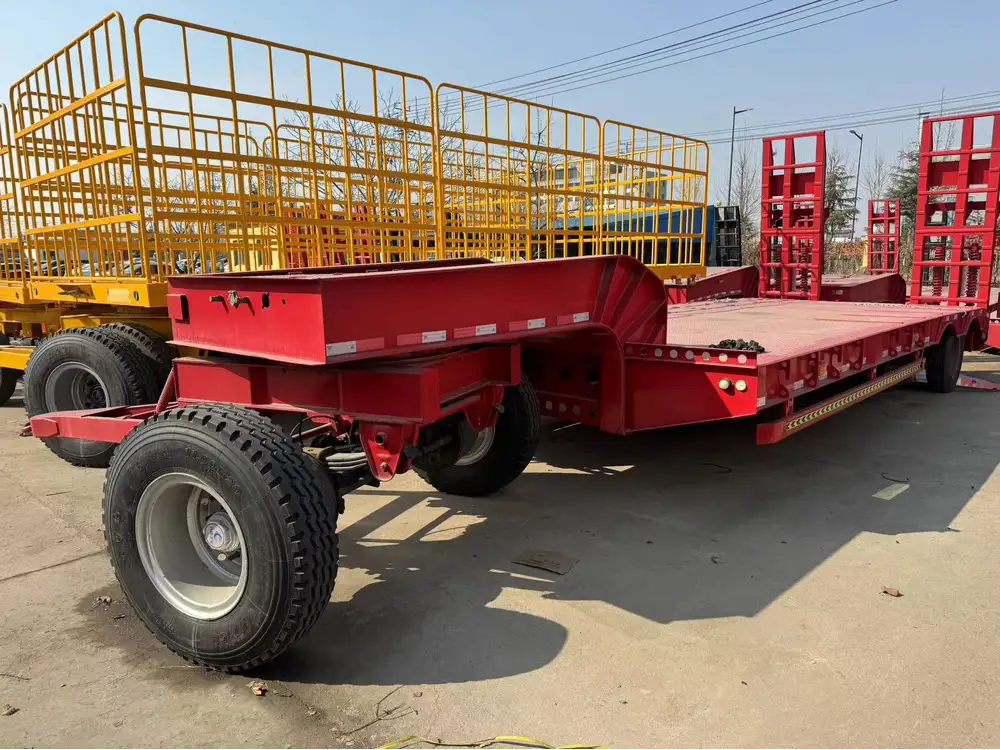Repairing a semi-trailer roll-up door may seem daunting, but with the right knowledge and tools, anyone can tackle this task effectively. Understanding the mechanics of these doors, common issues, preventative maintenance, and repair steps are essential for ensuring truck efficiency and safety.
Understanding Semi-Trailer Roll-Up Doors
1. Overview of Roll-Up Doors
Roll-up doors, often used in semi-trailers for their space-saving and operational efficiency, are typically made of durable materials such as aluminum or steel. Their design allows them to open vertically, minimizing space usage and providing easy access to the trailer’s cargo area.

2. Components of a Roll-Up Door
To comprehend repair procedures, it’s vital to familiarize yourself with the key components of a roll-up door:
| Component | Description |
|---|---|
| Curtain | The flexible material that rolls up, allowing access. |
| Drum | A cylinder that the curtain wraps around. |
| Tracks | Guide the curtain’s movement as it opens and closes. |
| Roller | Ensures smooth operation and alignment along the tracks. |
| Latch System | Secures the door when closed, preventing accidental openings. |
| Spring Assembly | Provides tension, aiding in the door’s opening and closing. |
3. Importance of Regular Maintenance
Regular maintenance helps detect potential issues early, prolonging the lifespan of the door and ensuring safe operations. A proactive approach can save substantial repair costs and prevent delays in cargo transport.
Common Issues with Roll-Up Doors

1. Misalignment of the Door
Misalignment is a frequent issue, leading to difficulty in opening and closing. Causes include wear and tear, debris in the tracks, or damaged rollers.
2. Damaged Curtain
The curtain can suffer tears or punctures from regular use or excessive weight. This situation compromises security and insulation.
3. Malfunctioning Springs
If the door is particularly heavy or won’t stay up, the springs may be malfunctioning and need replacement.

4. Sticking or Binding
A roll-up door should glide smoothly; however, dirt, rust, or damaged tracks may cause it to stick.
Step-by-Step Guide to Repairing a Roll-Up Door
Step 1: Safety Precautions
Before initiating any repairs, safety should be a priority. Follow these precautions:
- Wear Protective Gear: Safety glasses and gloves can protect you from sharp metal edges and debris.
- Ensure Stable Ground: Work on a flat surface to prevent accidents.
- Disconnect Power Sources: If the door is electronically operated, ensure all power is turned off.

Step 2: Diagnosing the Problem
Start by identifying the issue with the door:
- Inspect Tracks and Rollers: Look for obstructions or damage.
- Check Tension Springs: Inspect if they are taut or showing signs of wear.
- Examine the Curtain: Look for rips or punctures.
Step 3: Repair Procedures
3.1 Realigning the Door
- Loosen Track Bolts: Use a socket wrench to slightly loosen the bolts holding the track.
- Adjust Position: Gently guide the door back into the correct position.
- Re-tighten Bolts: Secure the bolts firmly once the door is aligned.

3.2 Fixing the Curtain
- Assess Damage: If the curtain has minor tears, consider a patch kit; for severe damage, a full replacement may be necessary.
- Use Repair Kit: Clean the area around the tear. Apply adhesive patch according to manufacturer instructions.
- Reinstall Curtain: If replaced, ensure the new curtain is correctly wound onto the drum.
3.3 Replacing Springs
- Remove the Old Springs: Carefully detach the broken springs from the mounting brackets.
- Install New Springs: Securely attach the new springs, ensuring they have the correct tension.
- Test: Gently lift the door and monitor its behavior.
3.4 Cleaning and Lubricating
- Clean the Tracks: Remove debris using a stiff brush and apply a degreaser if necessary.
- Lubricate Moving Parts: Use a silicone-based lubricant on rollers, tracks, and hinges to ensure smooth operation.

Step 4: Testing and Final Adjustments
After completing repairs:
- Open and Close the Door: Test the door multiple times, checking for smooth movement and proper latching.
- Recheck Alignment: Ensure there is no further misalignment.
- Inspect for Noises: Listen for any unusual sounds during operation that may indicate unresolved issues.
Preventative Maintenance Tips
Regular maintenance can significantly extend the life of your roll-up door. Consider the following tips:
- Routine Inspections: Schedule checks at least every six months, focusing on rollers, tracks, and springs.
- Lubrication: Regularly lubricate all moving components to minimize wear.
- Keep Tracks Clean: Remove any debris promptly to ensure free movement.
- Monitor Weight Loads: Ensure that the door isn’t overloaded beyond its capacity during operational use.
Frequently Asked Questions

1. How often should I perform maintenance on my semi-trailer roll-up door?
A thorough inspection every six months is recommended, with immediate attention to any unusual signs of wear or malfunction.
2. Can I repair the door myself, or should I hire a professional?
Minor repairs, such as lubrication and cleaning, can typically be performed by the owner. More complex issues, especially with springs, might require professional expertise for safety.
3. What materials are best for patching a torn curtain?
For minor tears, a heavy-duty fabric patch kit designed specifically for trailer curtains is ideal. For severe damage, consider replacing the curtain entirely.

4. If my roll-up door won’t close, what could be the problem?
Common reasons include misalignment, broken springs, or obstructions in the tracks. A thorough inspection will help identify the issue.
5. Are there specific lubricants recommended for semi-trailer roll-up doors?
Silicone-based lubricants are preferred as they do not attract dirt and grime, ensuring smooth operation over time.
Conclusion
Repairing a semi-trailer roll-up door may require technical knowledge and careful attention, but following this guide empowers you to address the most common issues effectively. Regular maintenance practices not only enhance operational lifespan but also provide peace of mind by ensuring the safety and security of your cargo. By implementing the described steps and understanding your door’s components, you can achieve a level of expertise that minimizes downtime and maximizes efficiency. Proper care of your roll-up door ultimately contributes to smoother logistics and more effective business operations.



